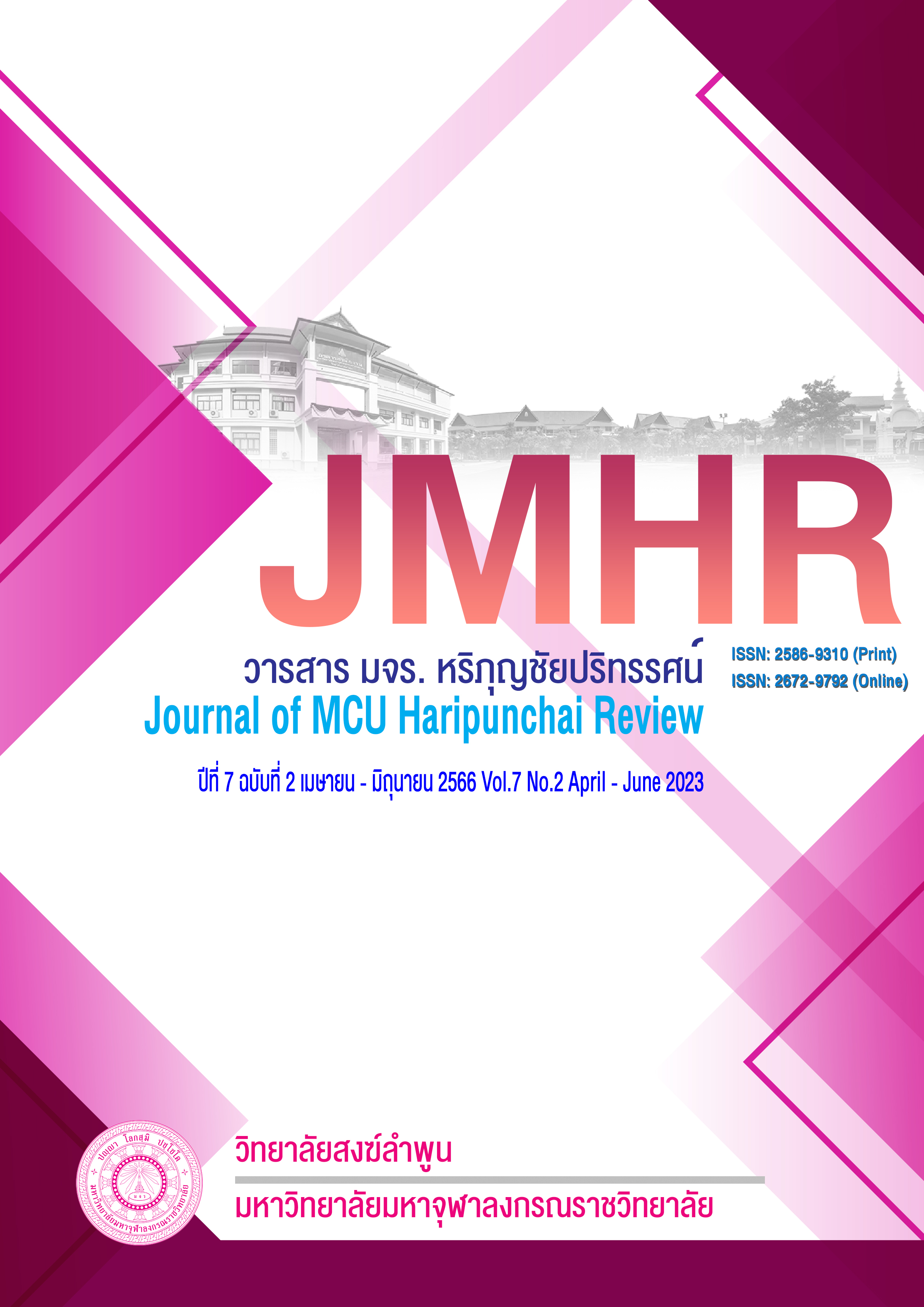The Model of Wellbeing Network Enhancement of Temple Health Promotion Volunteer Monks in Lamphun Province
Main Article Content
Abstract
The objectives of this article are 1) to study the situation of the well-being network of volunteer monks in Lamphun Province, 2) to develop a process for enhancing the health network, and 3) to present a model for enhancing the well-being network of volunteer monks. This research is a research and development model, Qualitative and operational research. The research tools are interview forms, academic discussion forms, and the development of network enhancing processes. The process are as follows: 1) Network formation process 2) Network management system arrangement 3) Roles and responsibilities of members 4) Network utilization 5) Network maintenance. The researcher analyzed the data according to the content.
The results showed that:
1) The situation of the well-being network of volunteer monks in Lamphun Province; There is coordination within the area with many agencies. The roles and responsibilities of members in the network are organized. Raise awareness of the benefits and determine the model enhancing the network. However, there are also weaknesses in the nature of work that different people perform only their own roles. There is also a lack of budget and social awareness in the performance of the well-being network of volunteer monks.
2) Development of the process of enhancing the health network of volunteer monks; The process is as follows: 1) Network formation process 2) Network management system arrangement 3) Roles and responsibilities of network members 4) Network utilization 5) Network maintenance, and the application of Aparihaniya dhamma principle.
3) Models for enhancing the well-being network of volunteer monks; The network system is set up including the organization of roles and duties of members, potential and competency development, the encouragement and welfare. In addition, the application of the principle of Aparihaniya dhamma is used as a mechanism for enhancing the work.
Article Details

This work is licensed under a Creative Commons Attribution-NonCommercial-NoDerivatives 4.0 International License.
References
เกรียงศักดิ์ เขียวยิ่ง และคณะ. (2539). การบริหารทรัพยากรมนุษย์และบุคคล = Human resoures and personnel management. ขอนแก่น: ภาควิชาสังคมศาสตร์ คณะมนุษย์ศาสตร์และ สังคมศาสตร์ มหาวิทยาลัยขอนแก่น.
จงกล นี ชุติมา เทวินทร. (2542). การฝึกอบรมเชิงพัฒนา. กรุงเทพมหานคร : พี เอลิ.
ชาญชัย อาจินสมาจาร. (มปป). การพัฒนาทรัพยากรมนุษย์. มปพ.
ชูชัย สมิทธิไกร. (2538). จิตวิทยาการฝึกอบรมบุคลากร. เชียงใหม่: ภาควิชาจิตวิทยาคณะมนุษยศาสตร์ มหาวิทยาลัยเชียงใหม่.
เชาว์ โรจน์แสง. (2554). เอกสารการสอนชุดวิชาการพัฒนาทรัพยากรมนุษย์หน่วยที่1-7. พิมพ์ครั้งที่ 3. มหาวิทยาลัยสุโขทัยธรรมธิราช: สำนักพิมพ์มหาวิทยาลัยสุโขทัยธรรมาธิราช.
ณรงค์วิทย์ แสนทอง. (2547). มารู้จัก COMPETENCY กันเถอะ. กรุงเทพมหานคร: เอช อาร์เซ็นเตอร์.
ดนัย เทียนพุฒ. (2541). กลยุทธ์การพัฒนาคนไขปัญหาคาใจนักฝึกอบรม. กรุงเทพมหานคร: โรงพิมพ์สุรพิม.
ปณิธาน หล่อเลิศวิทย์. (2541). นิยามศัพท์ส่งเสริมสุขภาพ ฉบับปรับปรุง 2541. กรุงเทพมหานคร: ดีไซร์.
ประเวศ วะสี. (2545). พ.ร.บ.สุขภาพแห่งชาติ: ธรรมนูญสุขภาพของคนไทย เครื่องมือนวัตกรรมทางสังคม. นนทบุรี: สำนักงานปฏิรูประบบสุขภาพแห่งชาติ.
_________. (2554). สุขภาวะชุมชนเป็นรากฐานของสุขภาวะทั้งมวล. กรุงเทพมหานคร: บริษัท พี.เอ.ลีฟวิ่ง จำกัด.
พระธรรมปิฎก (ป.อ.ปยุตฺโต). (2543). ทศวรรษธรรมทัศน์พระธรรมปิฎกหมวดศึกษาศาสตร์. กรุงเทพมหานคร : ธรรมสภา.
มหาจุฬาลงกรณราชวิทยาลัย. (2539). พระไตรปิฎกภาษาไทย ฉบับมหาจุฬาลงกรณราชวิทยาลัย. กรุงเทพมหานคร: โรงพิมพ์มหาจุฬาลงกรณราชวิทยาลัย.


